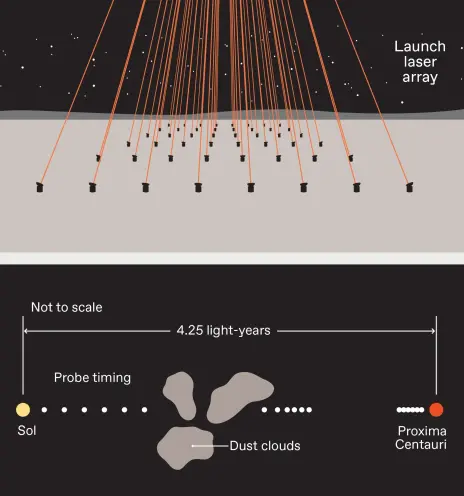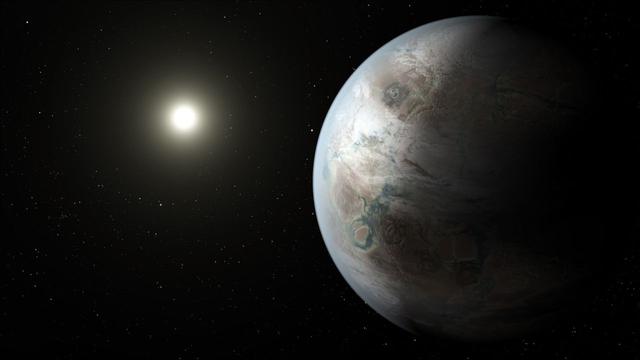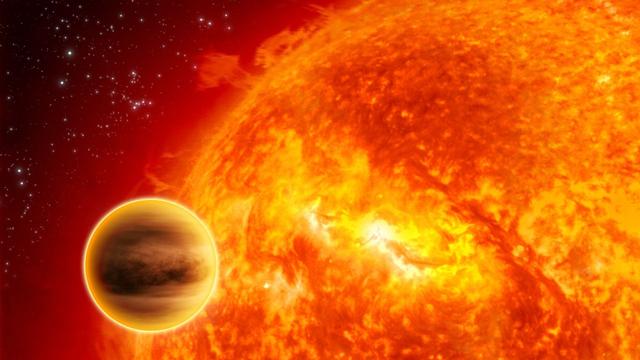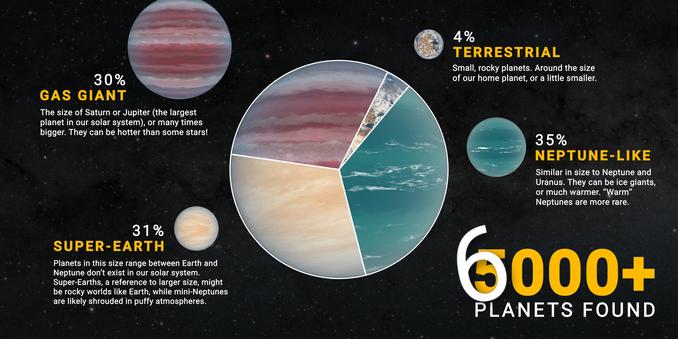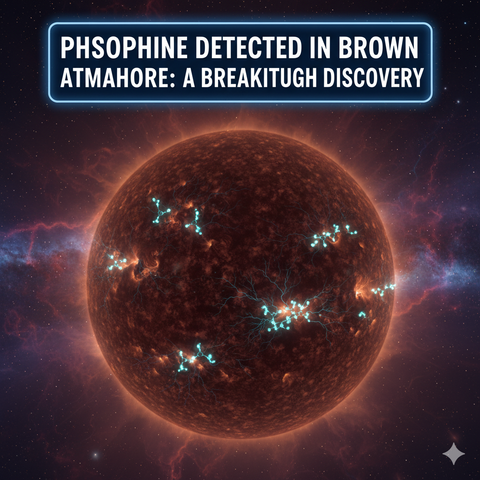Researchers have found a way to get close-up images of nearby #stars and #exoplanets within 25 years. These new probes would be tiny disks with optical sensors, accelerated into space by lasers, travelling at 0.2 times the speed of light. spectrum.ieee.org/high-speed-i...
#exoplanets
6,000 and counting: The next 30 years in the search for exoplanets
New in the #VirtualObservatory: “kappa And JWST/MIRI images” by Godoy N. et al.
https://cdsarc.cds.unistra.fr/viz-bin/cat/J/A+A/702/A4
#InfraredAstronomy #MultipleStars #Exoplanets
30 ans d'exoplanètes : il y a des beaux mondes !
« Environ 6.000 exoplanètes sont aujourd’hui recensées. L’étude de leurs caractéristiques a permis de mettre en évidence certaines tendances, appuyant notamment le fait que le système solaire constitue une vraie rareté de l’univers. Quelles sont nos connaissances de la démographie planétaire ? »
La Science, CQFD
https://www.radiofrance.fr/franceculture/podcasts/la-science-cqfd/exoplanetes-8061614
The exoplanet revolution at 30: 1st alien world was found around a sun-like star three decades ago https://www.space.com/astronomy/exoplanets/the-exoplanet-revolution-at-30-1st-alien-world-was-found-around-a-sun-like-star-three-decades-ago 🪐 #Exoplanet #Exoplanets #AlienWorlds #AlienLife #Extraterrestrials #Space #Science
New Research Suggests Red Dwarf Systems are Unlikely to Have Advanced Civilizations https://www.universetoday.com/articles/new-research-suggests-red-dwarf-systems-are-unlikely-to-have-advanced-civilizations 🪐 #Exoplanet #Exoplanets #AlienWorlds #AlienLife #Extraterrestrials #Space #Science
The exoplanet revolution at 30: 1st alien world was found around a sun-like star three decades ago
There might be more planets than stars in our galaxy, over 100 billion worlds hidden in the Milky Way. Could one of them be another Earth?
Read More: https://t.co/fLbiL5id3U
#SpaceDiscovery #Exoplanets #MilkyWay #Astronomy #sciencenews #NASA #Space #Sciences
Learn more about exoplanets, their structure and evolution, and how they deepen our understanding of the universe:
• https://science.nasa.gov/exoplanets/
• https://en.m.wikipedia.org/wiki/Exoplanet
NASA Exoplanet Archive: https://exoplanetarchive.ipac.caltech.edu/
#Exoplanets #Planets #Science #Physics #Astrophysics #Astrodon #Nature #Space #NASA #30YearsofExoplanetDiscoveries
An exoplanet, or extrasolar planet, is a world outside our solar system that usually orbits another star in our galaxy. They’re everywhere—but why study them? To explore their weirdness, variety, and the fascinating clues they offer about how planets form and evolve. Watch: https://youtu.be/0ZOhJe_7GrE
#Exoplanets #Planets #Science #Physics #Astrophysics #Astrodon #Nature #Space #NASA #30YearsofExoplanetDiscoveries
#30YearsofExoplanetDiscoveries: Over 6,000 exoplanets have been confirmed in our galaxy so far, showing incredible variety—some similar to planets in our solar system, others vastly different. Among them are “super-Earths,” mysterious worlds larger than ours and possibly rocky.
#Exoplanets #Planets #Science #Physics #Astrophysics #Astrodon #Nature #Space #NASA
Thirty years ago, astronomers announced that they had spotted the first known #planet orbiting a Sun-like #star.
The Nobel-winning discovery was the culmination of centuries of dreaming, and decades of searching, for worlds beyond the Solar System.
Astronomers have since found more than 6 000 #exoplanets, plus hints of thousands more and the exoplanetary zoo hosts a diversity of beasts.
At the top of many recommendation lists are the two small planets that orbit Proxima Centauri, which is the closest star to the Sun — just 1.3 parsecs away in the constellation Centaurus.
#astronomy
https://www.nature.com/articles/d41586-025-03220-3
Rogue Planet Found Having Massive "Growth Spurt" https://www.universetoday.com/articles/rogue-planet-found-having-massive-growth-spurt 🪐 #Exoplanet #Exoplanets #AlienWorlds #SolarSystem #Space #Science
New telescope cuts through space noise in hunt for distant Earth-like worlds https://phys.org/news/2025-10-telescope-space-noise-distant-earth.html 🪐 #Exoplanet #Exoplanets #AlienWorlds #AlienLife #Extraterrestrials #Space #Science
Spiral Arm Motion Solves Exoplanet Formation Mystery
New research reveals how spiral arms transport gas & dust, solving the puzzle of distant exoplanet formation. IM Lupi offers a key example. #exoplanets #planetformation
"There are Jupiter-size planets that orbit closer to their parent star than Mercury orbits the Sun; planets that orbit two stars, no stars, and dead stars; planets covered in lava; some with the density of Styrofoam; and others with clouds made of gemstones." #space #science #exoplanets #nasa #astrophysics
https://www.nasa.gov/universe/exoplanets/nasas-tally-of-planets-outside-our-solar-system-reaches-6000/
Astronomers just found phosphine in a brown dwarf’s atmosphere, exactly where models predicted. Could this strange molecule reshape how we search for alien worlds and life?
Read More: https://t.co/Stq5QYqwEZ
A dark world, unbound by any star, drifting into our solar system, chaos or capture? Rogue planets are real, and trillions may lurk in our galaxy. What if one came close?
Read More: https://t.co/HdElfn9t0Q
Rogue Planet Aurora: Storms and 1500C Heat? https://theblogofscience.com/rogue-planet-aurora-storms-and-1500c-heat/
#RoguePlanet #Aurora #Astrophysics #InterstellarSpace #Exoplanets #PlanetaryScience #MagneticField #BrownDwarf #Astrobiology #SpaceDiscovery
Exoplanet Habitability Index, a groundbreaking tool that helps scientists identify planets that might support life! From the thrilling discoveries of Proxima Centauri b to the fascinating science behind what makes a planet habitable. #Exoplanets
http://learningbreeze.com/physics/exoplanet-habitability-index-unlocking-clues-to-new-earths/
